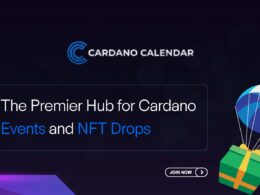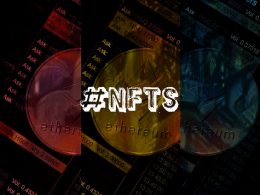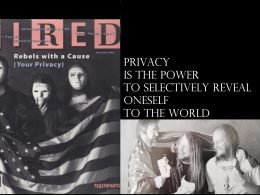NFT stands for “Non Fungible Token”, and are those unique tokens that cannot be replicated, and have an owner. Unlike FT “Fungible Tokens” such as ADA, ETH or BTC cryptocurrencies, those that are issued on a blockchain are equal to each other, and have the same representative value.
NFTs are managed and registered on a blockchain, and can be used to collect all kinds of digital art, videos, music, but also, without being art, they can be created as a document to give ownership of a property, or personal identity.
To identify an NFT, a Policy ID is required, which is like the serial number of a single NFT or all NFTs in a collection, and only valid NFTs will have that same Policy ID on a blockchain. This is the easiest way to avoid buying fake NFTs.
While Ethereum is older than Cardano in the DApp market, and clearly leads it in terms of NFT count, token market capitalization, sidechains, and the total number of DApps operating, Cardano is growing rapidly, and is coming as a serious competitor to Ethereum in the NFT market. There are three main reasons, let’s see.
First, because Cardano develops NFTs as native tokens on the blockchain, which allows any user without programming knowledge to generate new tokens, unlike Ethereum, which needs smart contracts to mint them. Learn about native tokens.
Second, Cardano has cheaper transaction fees.
Third, it also has a higher rate of transactions per second.
The two previous advantages acquire their characteristic in Cardano’s eUTxO registry model, which allows managing a greater number of shipments in a single transaction, unlike the Ethereum account model, which only allows one token shipment in each transaction. Thus, as I said, it is cheaper and faster.
According to Cardano Cube, Cardano records 30 developments on top of the NFT Marketplace.
According to the opencnft platform, more than 1.686 million NFTs have been traded in the 15 most active NFT markets on Cardano, since its inception and up to the date of writing this article, for a volume of more than ₳563 million, with more being minted than 6.8 million NFTs.
According to ‘Cardano dApp Store’ JPG Store is the application that registers the most number of transactions at the time of writing this article:
Currently the JPG Store is the most used NFT marketplace on the Cardano blockchain, and at the time of writing this article it registers More than 240 thousand unique wallets, 370 million traded volume and more than 16 million royalties paid to artists:
What Is JPG Store?
JPG Store is a digital marketplace where NFTs can be bought, sold and created, using smart contracts to handle all interactions. The protocol is open source and published on GitHub.
At the inception of the NFT market, NFT holders had to use end-to-end solutions such as escrow services, many of which required a trusted third party. JPG Store solves this problem, connecting Cardano NFT holders, giving them a trustless trading service. Thus, NFT collectors can interact with each other through the use of decentralized infrastructure.
It supports the most used formats in the design industry, JPG, PNG, SVG and others.
The main features of the development:
- Friendly user interface
- Filtering of features
- Royalties for creators
- Own artistic graphics of each NFT, on each asset page
- Smart contracts that allow you to sell/receive assets in seconds
- Technical transparency, with open source contracts, publications on the blog for technical updates, among other information published
In other blockchains optional royalties became very frequent, thus increasing the transactions without royalties, and this caused the exodus of creators with a drop in the volume of transactions. The JPG Store team considered using a centralized off-chain method to take care of creator royalties by requiring the JPG Store to sign off on all transactions for NFTs traded on the platform.
In that sense, the team had reported two changes, in a tweet:
- purchases would require a JPG Store signature, thus preventing a 0% royalty marketplace from using JPG Store listings, protecting creators, and
- NFTs could not be migrated to a non-royalty paying contract.
There were complaints from the community, and the JPG Store decided to give up this mechanism, communicated in this tweet. They said they are working on a Cardano Improvement Proposal (CIP) to help introduce a decentralized on-chain solution for royalty management.
How Does It Work?
Minting is the process of turning a digital file into an asset stored on the blockchain. Once minted, the NFT is available for purchase and sale.
To trade on the JPG Store platform, a wallet with funds to purchase NFTs is required, plus Collateral which is a small amount, typically 5 ADAs, which is reserved to combat malicious spamming attacks. It can be recovered at any time, when you stop trading on the platform.
To operate, the wallet must be connected with the “Connect Wallet” button. The Cardano blockchain wallets supported on the JPG Store are: Nami, Eternl, Flint, Gero, Typhon, and NuFi.
The costs of each transaction are: JPG Store charges 2% on sales, plus the native cost of operating on the Cardano network with transactions and smart contracts, and finally royalties for creators.
The selling service includes these other costs:
~ ₳1.5 to list an asset on the smart contract, and ~ ₳1.2 returned when the asset is delisted.
~ ₳0.25 to upgrade assets that are listed on the smart contract
To sell an NFT, it must be listed on the platform. In the profile, choose ”My NFTs” and you will see all the NFTs in the wallet. Choose the one you want to sell, click on “Sell NFT”, enter the sale price and click on ”Send listing”. Finally, it must be confirmed with the wallet password.
To purchase NFTs wallet must be connected and the Collateral configured. In the ”Market” section, select the “Buy now” option. To improve the search it can be used a filter of collections or prices and choose to see all the collections or only the verified ones. Once you have found the NFT to buy, click on “Buy NFT”, and you will be asked to sign the transaction with the wallet password.
A verified collection means that the collection page visited matches the Policy ID to avoid fake assets, but this does not mean that it is endorsed by the JPG Store, as noted on the site.
Creators can start trading by pulling down the “Creators” menu and clicking “Create your Collection”. There you can use the “Express Mint” to produce a small collection or request the minting of a larger collection.
Creators are provided with a minting helper tool, which allows artists to convert their artwork into NFTs. The program makes it easy, for free, to start sharing work through NFTs on Cardano, accessing with the “Aply for Launchpad” button, and thus they will obtain exclusive access to the minting platform, which includes the proper structuring of their metadata and features, for instant verification in JPG Store.
The team recommends minting NFTs with a royalty token to get their art entitlement, which is automatically calculated during a sale by sending the charge to the wallet address minted in the policy or another designated by the creator.
To preserve the integrity and quality of the store, the team reviews all submitted artwork/collections. It is only possible to verify the collection if it respects the Verification Standards, otherwise they will be rejected. The reasons for rejection are: pornographic or obscene content, violent material, plagiarized graphic material, which incites hate or is offensive, which is suspected of fraud or deception, or that the metadata is poorly structured. More information in Collection Verification.
JPG Store will begin offering the option to purchase NFTs with a credit card, and for this it has partnered with Winter. The option requires the use of your email address, given the KYC nature of credit cards.
The team recommends three platforms for consulting on NFT market activity: cnftJungle, opencnft , and cnftTools.
The Team
The team has as its motto “Empowering creators through innovation” and continues with “Our mission is to support the artists, creators and communities that are advancing the ecosystem and helping Cardano realize it’s vision of providing financial sovereignty & identity.”
Its co-founders are: Blake Brown, graduated from the University of Waterloo, Vancouver, with a Bachelor of Applied Science (BASc), Electrical and Electronics Engineering, according to his LinkedIn, and Shannon, with his nickname Shabro.
The website shows 35 members that make up the team, also detailed on LinkedIn.










